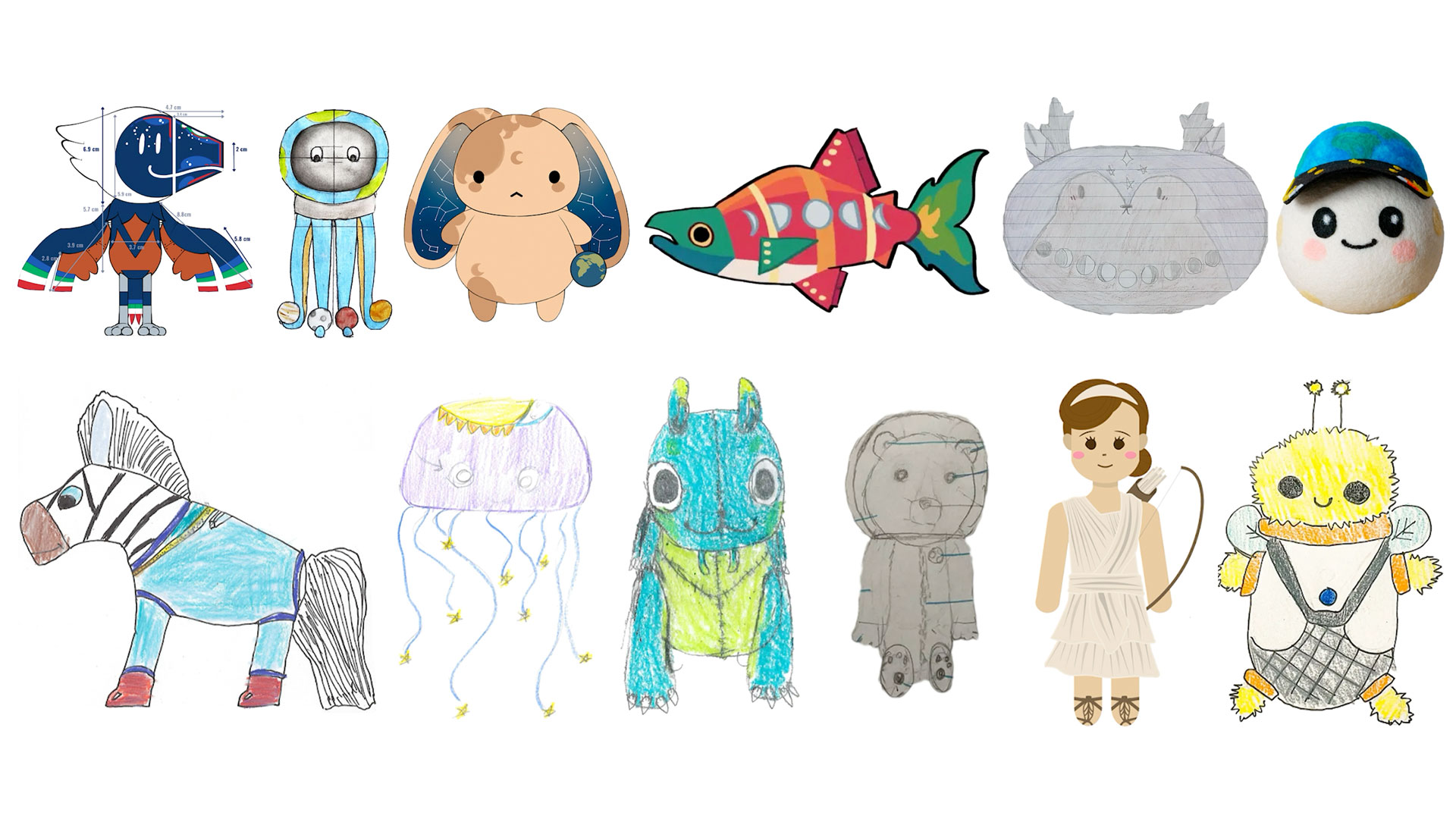When the Artemis 2 astronauts launch to the moon next year, they will be accompanied by one of 25 plush toys just named a finalist in a NASA contest.
The space agency and Freelancer, a crowdsourcing company, on Friday (Aug. 15) announced the winners of the “Moon Mascot: NASA Artemis II ZGI Design Challenge,” which ran from March through June. NASA will now select from the finalists a single doll to become the mission’s zero-gravity indicator (ZGI).
The designs range from anthropomorphized animals, mythological creatures and nods to NASA’s past, present and future space exploration efforts. A full list of the winners along with their submissions can be viewed at collectSPACE.com.
“These finalists have proven they indeed have ‘the right stuff,’” said Matt Barrie, Freelancer chief executive, in a statement.
The chosen toy will be suspended from a tether inside the Artemis 2 Orion spacecraft, such that when the crew enters the microgravity environment of space, it will begin to float. Hence, the ZGI will indicate to the astronauts that they are in zero-g.
The 25 winners, who will receive either $1,225 or an Artemis prize pack depending on their age, were selected from three groups: K–12 Individual, K-12 Classroom and Adults. In total, 2,605 entries were received.
The finalists hailed from Canada, Colombia, Finland, France, Germany, Japan, Peru, Singapore, the United Kingdom and the United States. In the U.S., entries were received from California, Colorado, Connecticut, Indiana, Kansas, Maryland, Nebraska, Texas and Virginia.
Contestants were challenged to design and submit a rendering of a small plush toy that represented “humanity, exploration and the spirit of the Artemis campaign.” They were limited to a list of materials used in NASA’s Thermal Blanket Lab, where the idea that is selected to fly will be fabricated into a real ZGI.
“The creativity [the finalists have] shown is incredible — they should be proud to have their efforts recognized on such a stage and be part of humanity’s ongoing quest to understand the cosmos,” said Barrie.
Artemis 2 will be the first crewed moon mission since Apollo 17 in 1972. The Artemis 2 astronauts won’t land on Earth’s nearest neighbor, however; they’ll fly around the moon and then head back to Earth.
